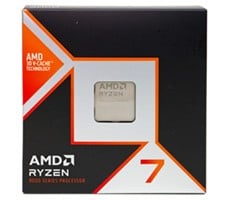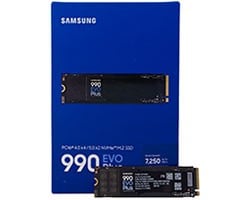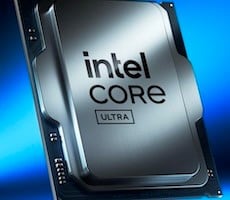AMD Ryzen 7 9800X3D Review: An Ideal CPU For PC Gamers
For the 3DMark Physics test, we simply create a custom 3DMark run consisting solely of the physics test, which is multi-threaded and CPU dependent, and report the results...
UL 3DMark CPU Physics Benchmark
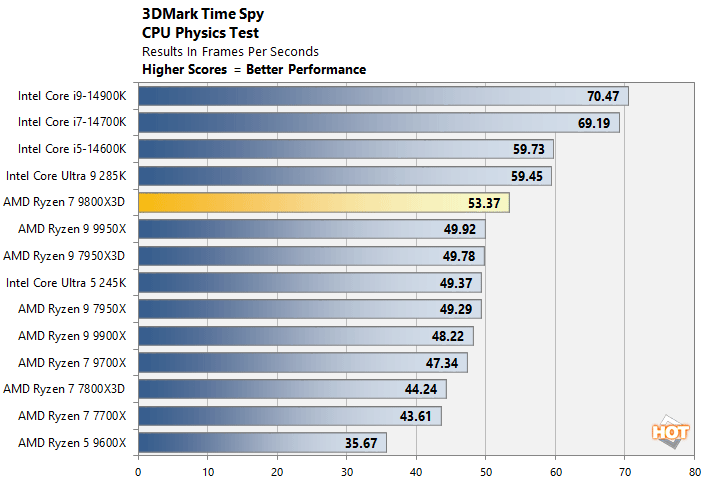
3DMark's Physics test ran particularly well on the Ryzen 7 9800X3D relative to the other Zen 5 chips, but this benchmark really likes Intel's architectures -- especially Raptor Lake.
High And Low Resolution Gaming & Graphics Benchmarks
We also ran some mid and high-resolution game and graphics benchmarks on our test rigs with 3DMark, F1 2024, Final Fantasy XIV: Dawntrail and The Talos Principle 2. We used 3DMark's default Time Spy preset, and the games were run in two different configurations — either 1080p with Medium/High details, or 4K with High/Extreme details. The lower resolution tests are designed to be more CPU bound to better isolate processor performance, while the higher resolution tests are more GPU bound, where the CPU should have less of an impact.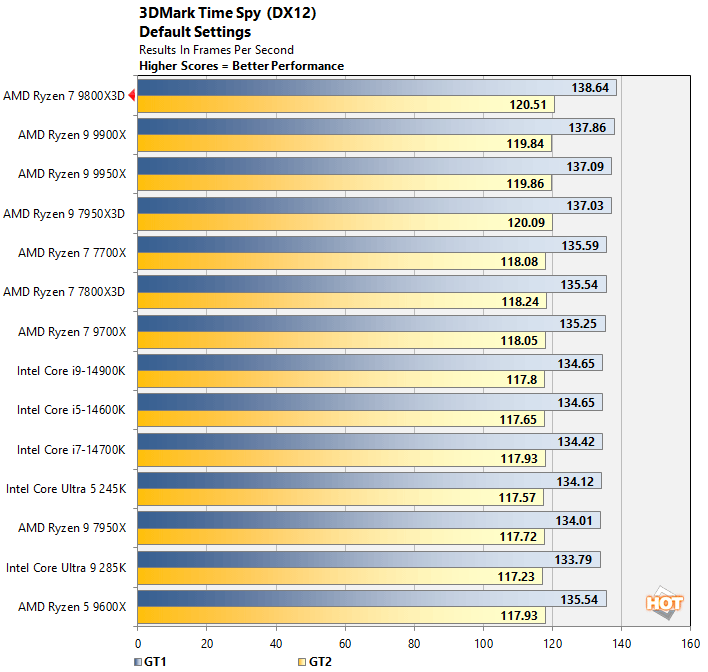
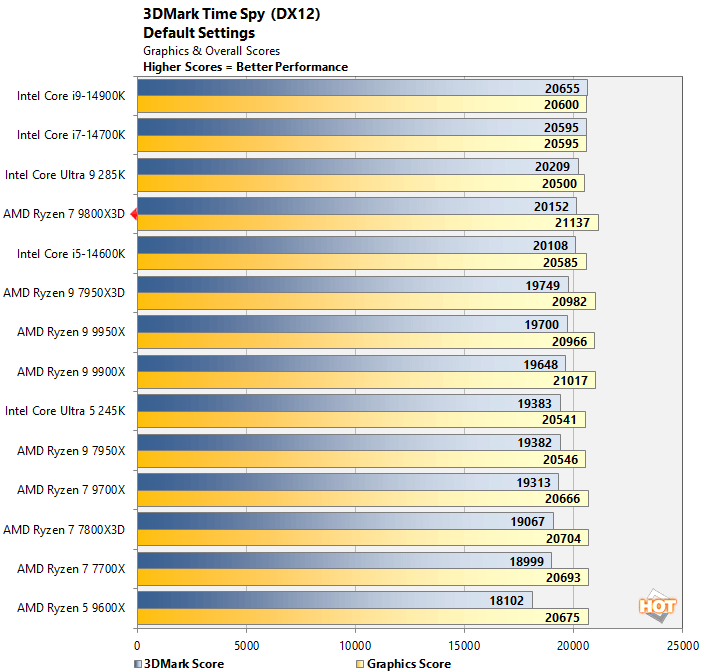
You'll notice these 3DMark-related charts have different rankings. That's because the actual Game Test framerates are not the only things factored into the overall score -- the physics results are also thrown into the mix. As such, the Ryzen 7 9800X3D lands in fourth place here, behind Intel's fastest processor in terms of its overall score. However, the Ryzen 7 9800X3D posted the highest actual framerates of the bunch, albiet by relatively small margins.
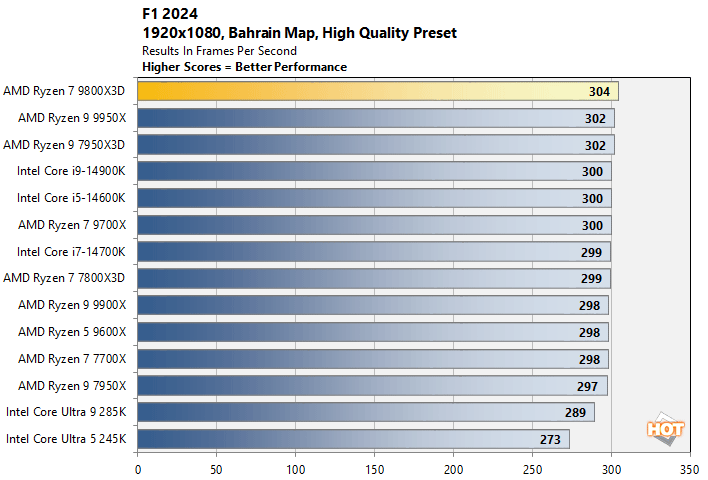
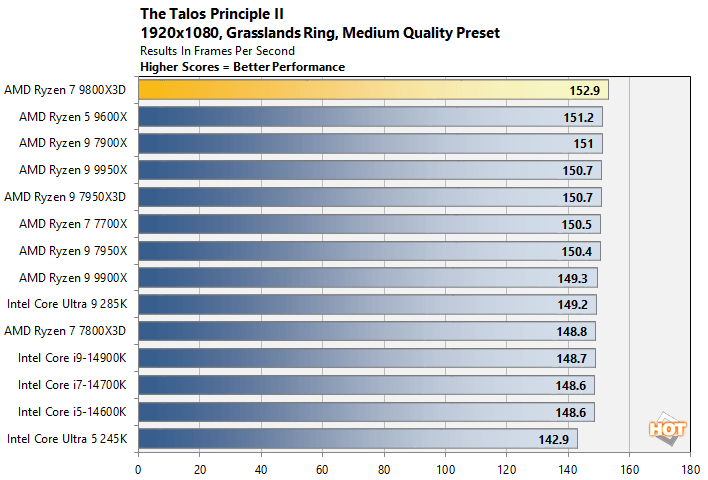
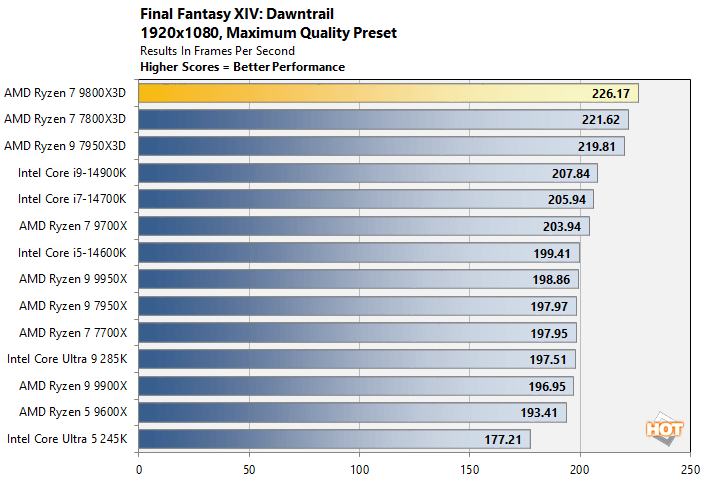
Thanks for making it easy for us to summarize our 1080p game tests, AMD. As you can see, the Ryzen 7 9800X3D outperformed every other processor we tested, with all of the games we tested. AMD claimed increased gaming performance over the previous-gen 7800X3D across the board, and better gaming performance than the Core Ultra 9 285K, and that's exactly what we saw here.
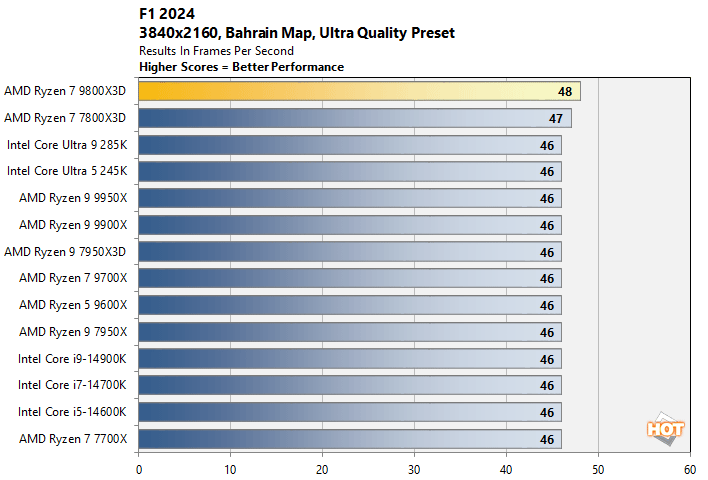
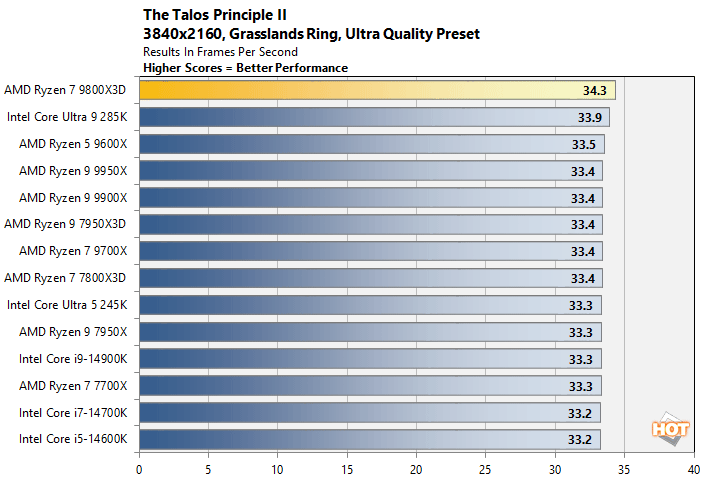
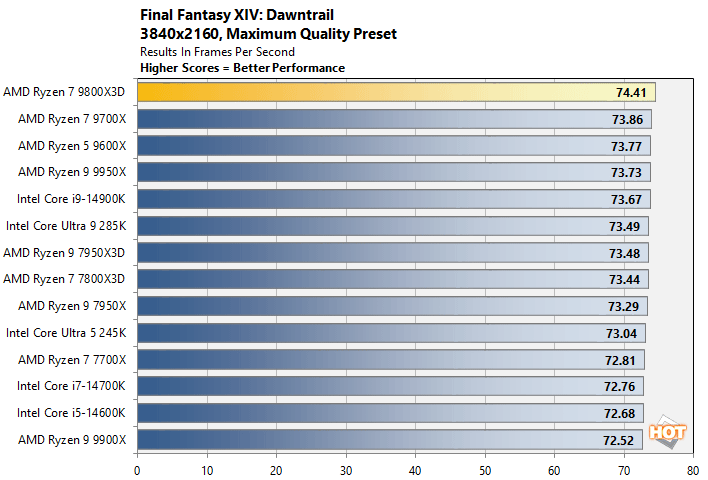
AMD Ryzen 7 9800X3D Total System Power Consumption
Throughout all of our benchmarking and testing, we also monitored how much power our test rigs were consuming with a power meter. Our goal here is to give you an idea as to how much power each configuration used while idling at the Windows desktop and while under taxing CPU workloads across one or all cores. Keep in mind, this is total system power consumption being measured at the outlet and not the the individual power being drawn by the CPUs alone.
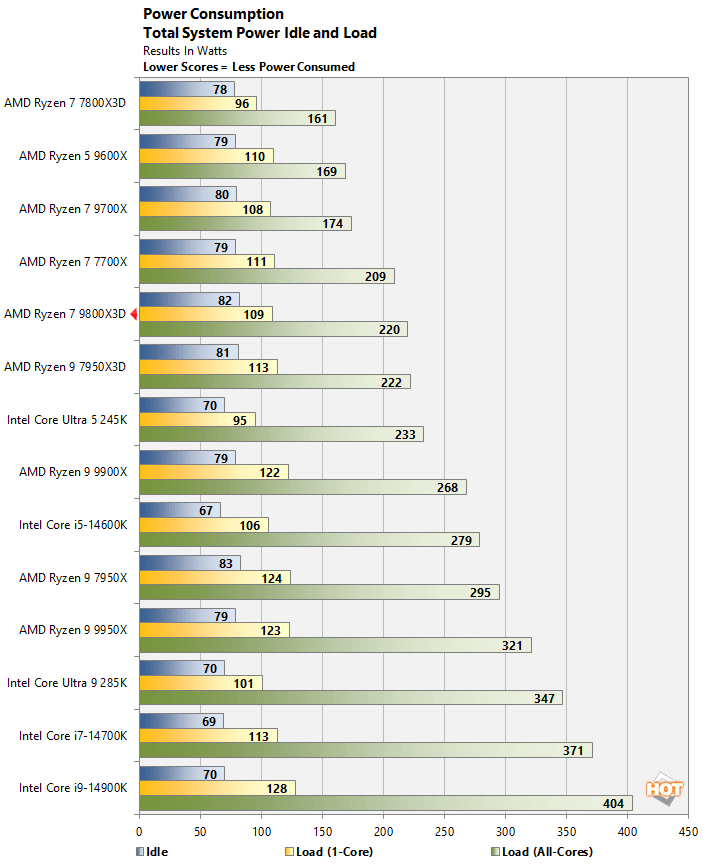
There's nothing extraordinary to report regarding the Ryzen 7 9800X3D's power consumption, other than to say it is a relatively power-friendly processor. It's higher clock and 3D V-cache does push power consumption somewhat higher -- it nearly matches the 16-core / 32-thread Ryzen 9 7950X in peak power -- but in light of all of today's latest architectures, it finishes right in-line with expectations. The Ryzen 7 9800X3D consumed more power than the 8-core / 16-thread Ryzen 7 9700X (san 3D V-cache), but less power than the 12-core / 24-thread Ryzen 9 9900X. And it consumes less power than all of the Intel processors we tested from the last couple of generations.
How power, frequencies, and thermals are affected in a variety of workloads with the Ryzen 7 9800X3D is presented in the charts above. What you see here are frequencies, temps, and utilization over the course of a couple of 3DMark Time Spy and PCMark 10 Applications benchmark runs. The CPU clock shows relatively small variations, and remains in the 4.7GHz - 5.2GHz range whenever the CPU is under load, but it dips lower when not fully taxed. CPU temperatures also remain relatively low, and vacillate mostly in the low-70°C / high-60°C range. When running in its default configuration, we saw peaks of about 78°C, and temps never exceeded 83°C with the Ryzen 7 9800X3D.



